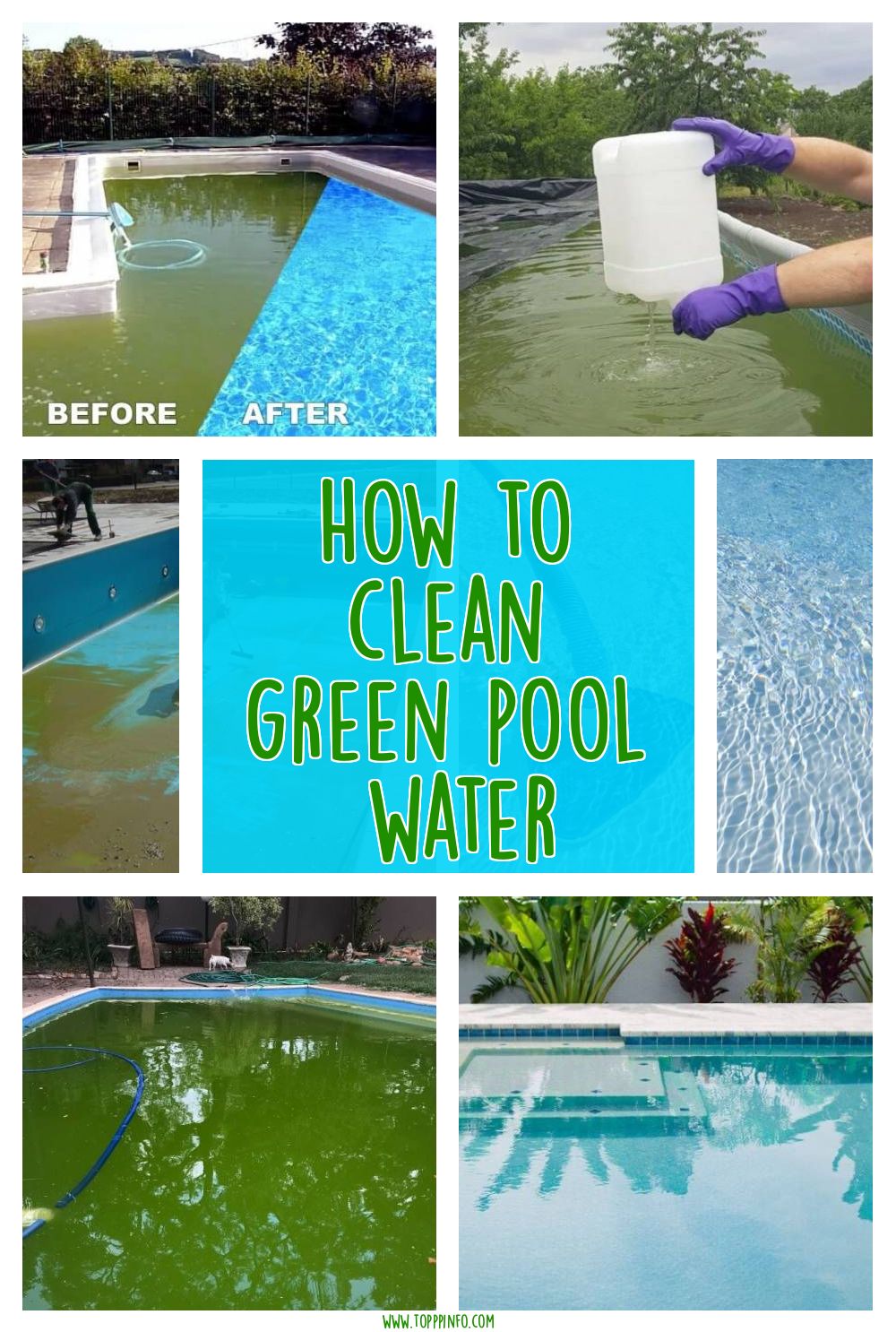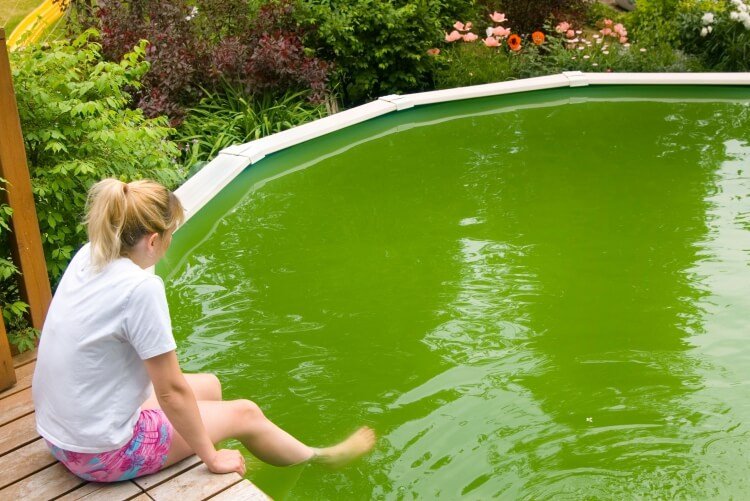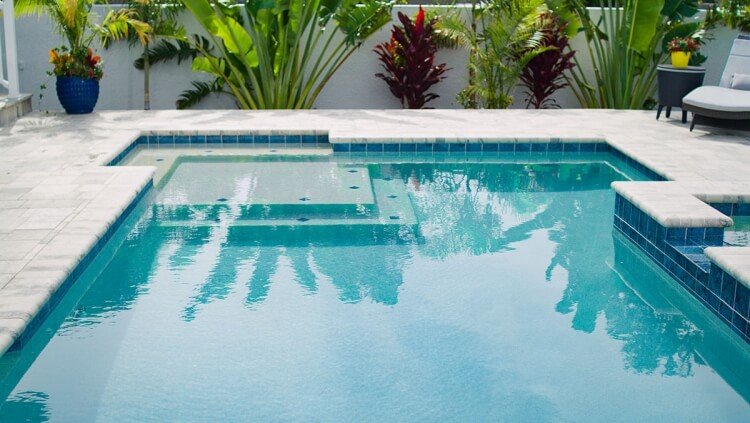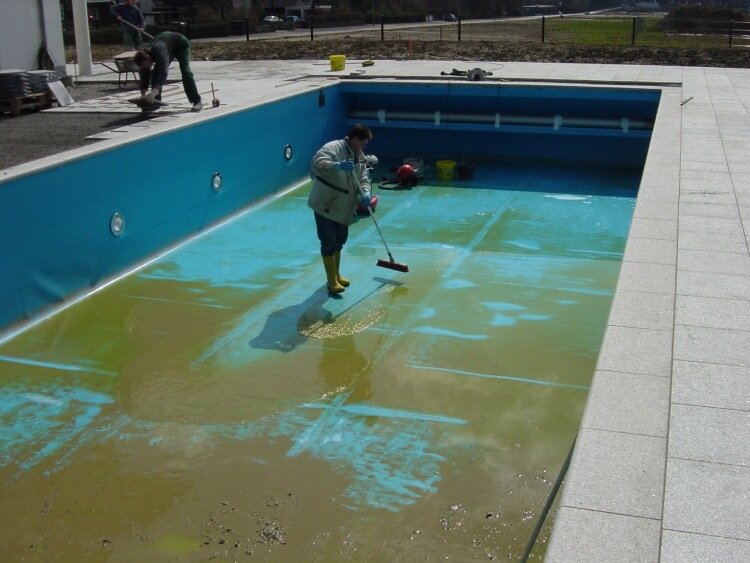How to clean green pool water so that your pool parties are not a disappointment?
Either a small natural swimming pool in your French garden or your haven of freshness during the heatwave period, the aquatic basin must be clean and limpid. On the one hand, green swimming pool water is full of bacteria and can spread infectious diseases. On the other hand, the bottom can be slippery and serious falls are not excluded. So if it’s clear why, then how to clean? Follow the pool maintenance tips in the article below.
What causes green swimming pool water?
Since the Indian summer last October, you haven’t taken a dip in the pool. As temperatures rise, your desire to cool off by stretching your muscles increases. But as soon as you look at the pool, what a disappointment! The water is greener than your lawn. Stop! Don’t start blaming yourself for this negligence! Yes, it is neither healthy nor safe to swim in green pool water, and cleaning it, can seem too difficult. The longer you wait, the problem will only get worse. Why is the water in my swimming pool green? This question bothers you despite the relevant layout of your aquatic paradise.
If you can’t afford a pool enclosure, cleaning up debris and keeping the water clarity is an essential part of every homeowner, even though sometimes the task of tackling a pool filled with green water isn’t the job of your expertise. It can happen to anyone. The best way to avoid green pool water is to find out how and why it happens. Maybe you have an idea!
Swimming pool water has only one enemy: algae.
Algae are simple plants that thrive in water that provides them with food and a hospitable environment. It doesn’t take much for algae to enter your pool by spreading through the air or debris, a swimsuit, or a pool toy.
Green enemies are comfortable in water containing nitrogen and phosphorus. Interestingly, the intensity of the color, starting from “light green sheen” and going to “dark swamp green-brown,” gives you some of the information you need to combat the problem. How did it go?
Some reasons why algae cause green and cloudy pool water
The simple but boring reason for green swimming pool water is a lack of sufficient water and sanitizer testing. When your pool’s sanitizer and chlorine levels drop below optimal levels, or the chlorine gets tangled with other chemicals in your pool, you are “opening the door” to algae.
First, the disinfectant makes your pool inhospitable to algae and kills it.
Second, if you don’t test often enough and add enough bromine or chlorine (or whatever type of disinfectant you use), you run a high risk of acquiring algae.
On the contrary, you test regularly, but the result is not satisfactory. Green swimming pool water without algae makes you think. What could be?
- Extreme changes in heat and weather
- Strong winds
- Dirt from debris
- Incorrect pH levels
- Clogged pool filter
If any of these things are happening in your area or your mining pool, you are more likely to face an algae bloom, and you should test more often. Daily or every other day will not be too much.
Green swimming pool water treatment: essential cleaning steps
- Beforehand, assess the situation because no one wants to empty their pool if they can remedy it. Dip your hand up to the elbow in water, and if you see it, the cause may be won. If, on the contrary, you cannot see it, you may need to drain and wash with acid.
- Check the filters and clean them if necessary.
- Vacuum to remove algae and debris from your pool so that whatever you take out doesn’t come back.
- Set your filter’s valve to Waste, then vacuum, removing as many algae and sediment from the bottom of the pool as possible.
- Brush the walls and floor of the pool with a sturdy brush as the algae are tough and stubbornly cling to the surface. Scrub everything: walls, floors, steps, and any other surface on which algae might adhere.
- Testing the water for pH and alkalinity will only prove the low chlorine level, which is for informational purposes only.
How to catch up with green swimming pool water?
Your poolside landscaping is immaculate, but the dark green water is reminiscent of a dark, squalid swamp. This means that a larger algae infestation is rife. So the way to catch green swimming pool water should be aggressive and shocking and done three to four times. Calcium hypochlorite shock is urgently needed. If the granules settle to the bottom of the pool, use a brush to disperse them. Add the recommended dose while the filter pump is running, and do not stop this process until the water becomes clear. If you want to clean faster, run the filter for at least 24 hours to remove dead algae from the water and make sure the shock is completely gone.
How can we prevent algae from forming?
The formula is simple: test, balance, and test again. When your pool is no longer green, test the water, this time not only for pH and alkalinity but also for sanitizer. Add chemicals as needed to balance things out. Test again to make sure everything is as it should be and the pool is safe from diseases and incidents.
Once a week or better, every other day, test the water. If you notice that the levels are a little low, immediately add disinfectant or algaecide.
Green water swimming pool baking soda
Assuming that baking soda helps you when gardening against fungus, why not test it against algae in the pool.
A rule of thumb is to increase alkalinity by using 2.3 kg dissolved in a swimming pool containing about 40 cubic meters of water. If your pool’s pH is below 7.2, add 1.4 kg of baking soda. If you’re new to adding pool chemicals, start by adding only half or three-quarters of the recommended amount.












